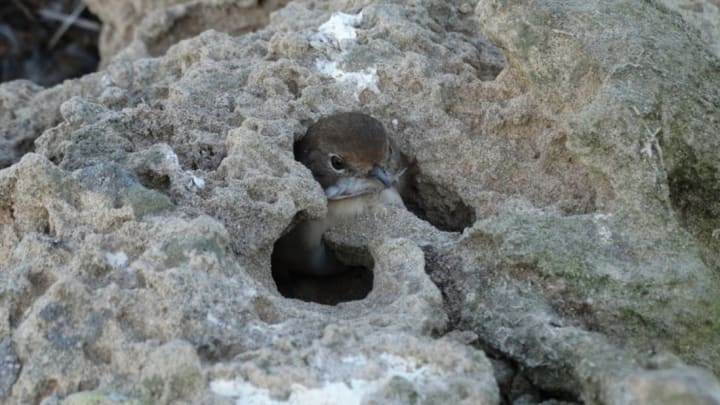Humans aren’t the only animals that keep larders of food. Squirrels, of course, are well known for stashing acorns away for the winter. The shrikes, a.k.a. butcherbirds, also store food—by impaling their prey on thorns and barbed wire fences, which makes it easier to eat and share their food (and even impress mates). But that's child's play compared to the hunting strategy of the Eleonora’s Falcon. These Mediterranean birds capture and essentially imprison prey that’s still alive.
For most of the year, the falcons feed on insects, but in the late summer and fall—when migratory birds are passing through their territory and the falcons are breeding and have new mouths to feed—they’ll add small birds to the menu. A team of scientists doing a long-term study of the falcons’ behavior in Morocco were around during the falcons’ bird-hunting season and witnessed a behavior that’s unprecedented in birds of prey.
Instead of killing and eating the smaller birds after attacking them, the falcons plucked the flight feathers from the birds' wings and tails, then stuffed them into deep, narrow cavities and cracks in rocks. The falcons kept the live birds trapped like this for a few days—unable to move their wings and unable to fly even if they did wriggle out—before pulling them back out and killing and consuming them.
The researchers think that the falcons may keep their prey prisoner for one of the same reasons other animals store food: It allows them to take advantage of a food source that’s available for a limited time, but which they might not need to eat right away. Keeping the prey alive is necessary in the dry heat of the Moroccan coast; stored carcasses would quickly dry out. They say that trapping live prey might also give falcon chicks an opportunity to practice killing birds on their own.
